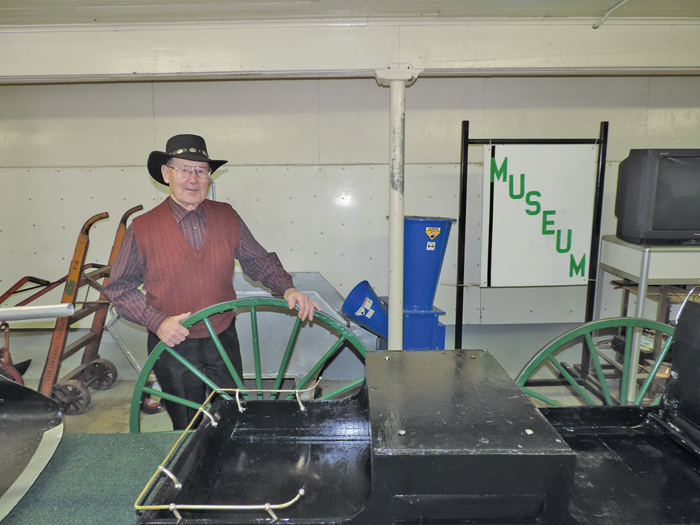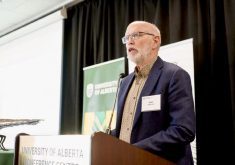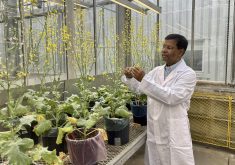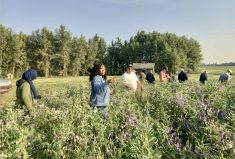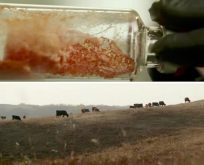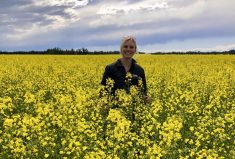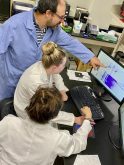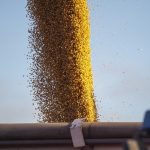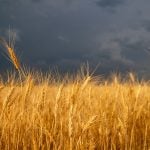Fourteen years ago, Jack Francis began a letter-writing campaign, urging the University of Alberta to create a museum to house artifacts from its ag faculty.
And when he got a positive response, he stepped up to the plate.
“If one suggests something, you have to do something about it and help support it,” he said.
Since then, he’s recreated a 1919 buggy, created models of the original south campus, and catalogued hundreds of farming implements associated with the faculty and farming in Western Canada.
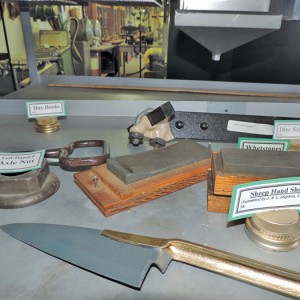
Now 87, Francis has logged a whopping 66 years with the department, now known as the faculty of agriculture, life and environmental sciences (ALES). While he was never a student, he began working at the campus in 1945, becoming an animal technician in 1949, and working on nutrition and genetic projects in beef, swine and cattle until his retirement in 1993.
Having seen so much of its history, Francis knew it was worth preserving.
“I was first attracted to it because I had a lot of experience with the stuff in the barns,” said Francis, now the museum’s volunteer co-ordinator. “There was a lot of experimental equipment that had to be made for experiments that were finished. The equipment was sitting around doing nothing after the experiments. That’s what started the whole thing for me.”
Read Also
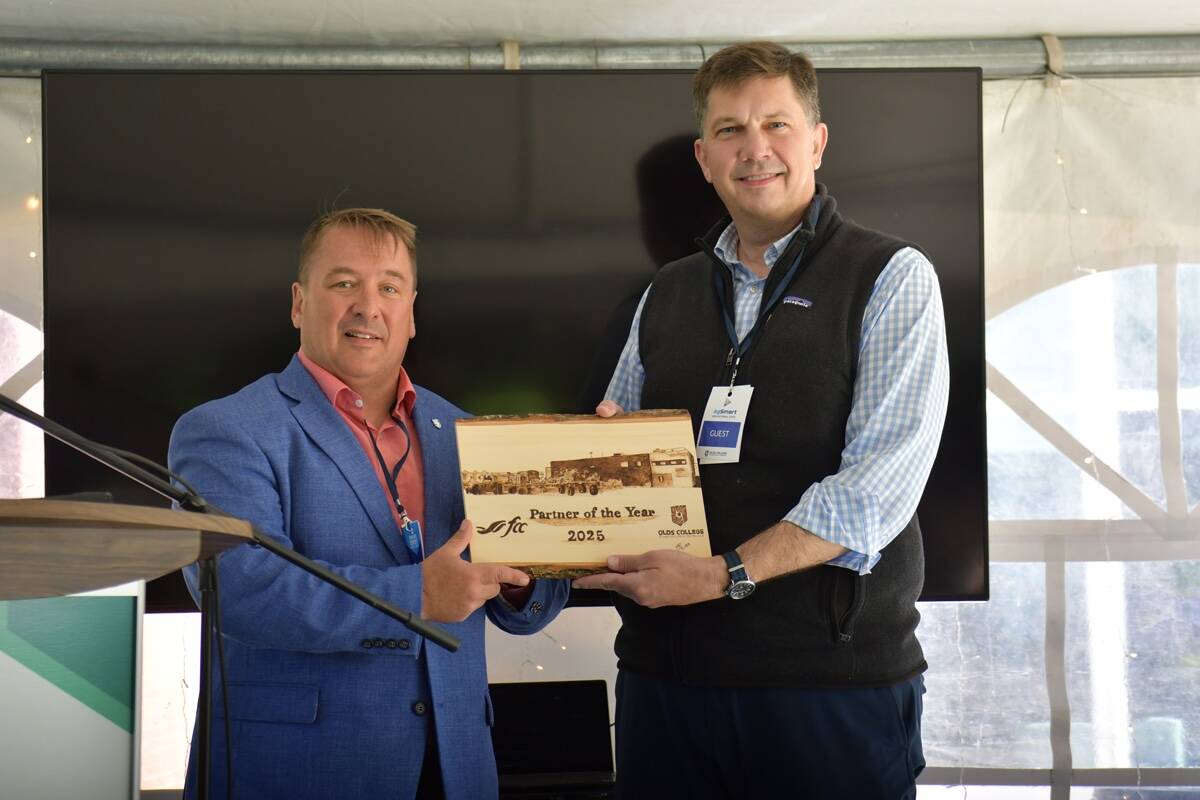
Olds College recognizes Farm Credit Canada as 2025 Partner of the Year
Olds College recognized Farm Credit Canada as its 2025 Partner of the Year in July, marking the second time the organization has been awarded the recognition.
The first museum was housed in an unused area of the meat research section of the horse barn on the south campus in Edmonton. In 2010, it moved to the 1921 horse barn, tucked away in a corner near the physical education buildings, and now houses more than 470 items.
The collection includes photographs, building models, farm equipment, items associated with campus life, and laboratory equipment — some used on campus, others donated by community members. Among the treasures are unique items, such as the prophylometer, which was used to measure dwarf cattle.
“I don’t know if you will find another one in Canada — it’s very rare,” said Francis. “It’s a caliper that measures between the eyeballs from the outside.”
He identifies and categorizes items, but support from faculty, alumni, and staff has been key.
“The budget isn’t that great, so all help is honoured,” he said.
The museum doesn’t have regular hours, but is opened for people who are doing archival research or identifying donations. It can also be rented for community events, and tours can be quickly arranged, said Francis, who lives nearby and is on site several days a week.
“When you have a museum to look after, you have to look after it,” he said.
To tour the museum or donate an item, you can contact Jack Francis by email.


